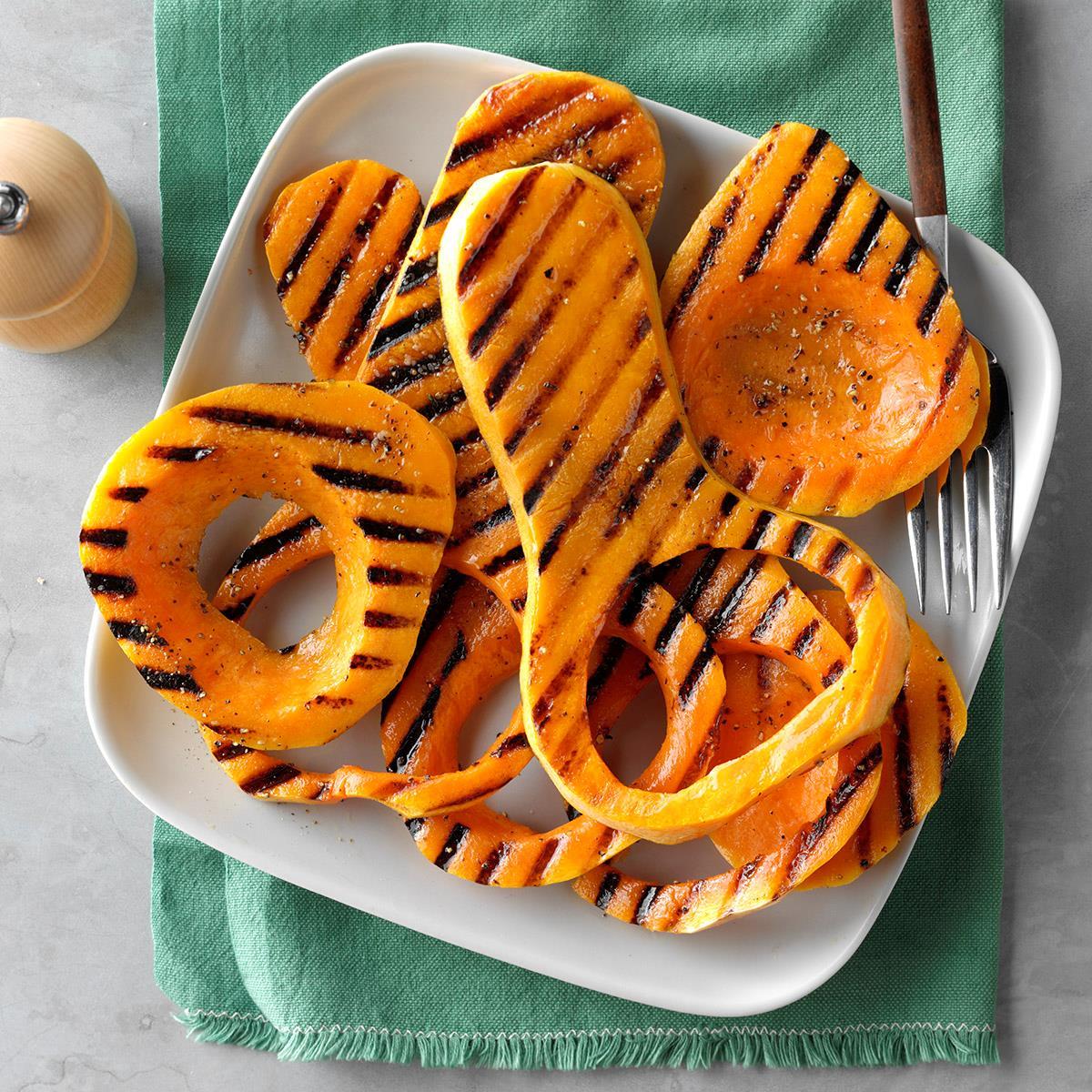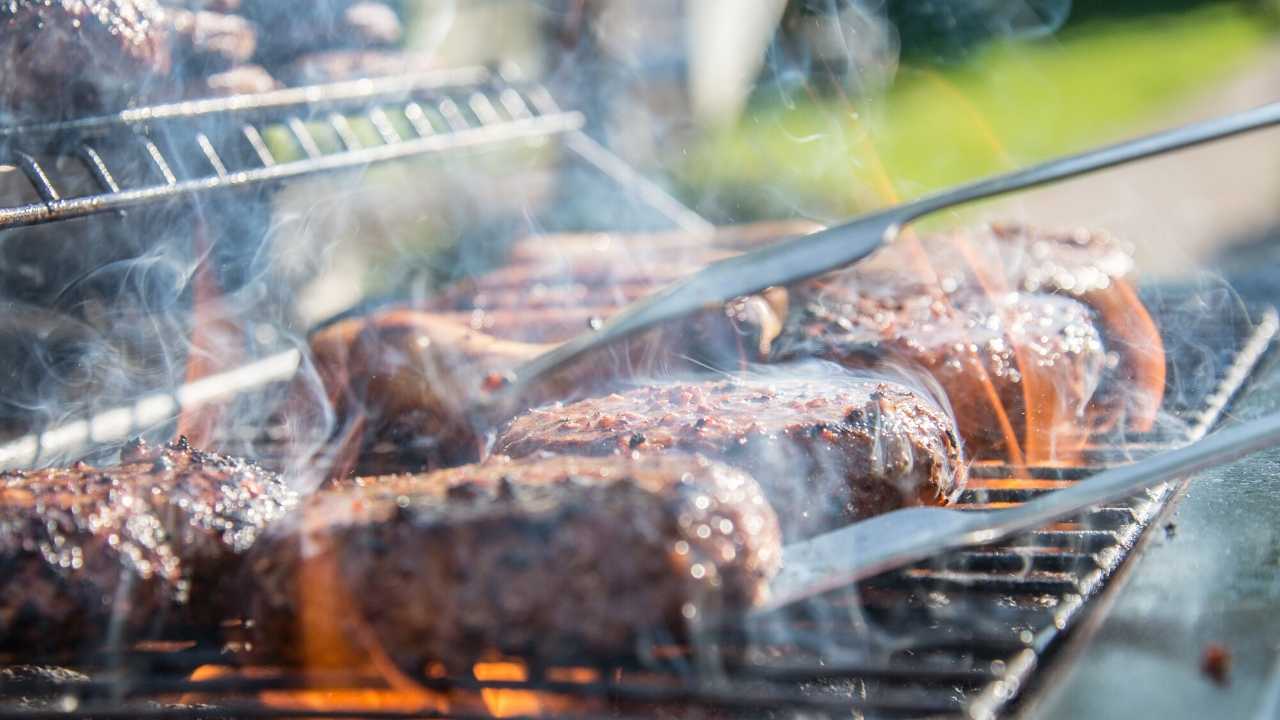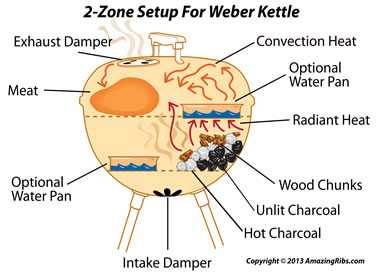
To get maximum heat, cook food over the coals. You will get more heat from a charcoal grill that has wide vents. If your flames burn brightly, it means that there is sufficient oxygen. Low flames indicate that there isn't enough oxygen. Close the vents if your food is cooking too quickly. The heat will rise the more you turn up the flames. If the flames appear too low, it is because you are using too much charcoal.
Ventilation
A charcoal grill will have an intake vent. This device is used to provide oxygen to the combustibles. This is the source for the grill's "fuel." The larger the vent, the more oxygen will be allowed to enter the grill, raising the temperature. It is important to regulate the oxygen rate in order to control the temperature.
The main method of controlling the temperature is to use the charcoal grill’s intake vent. You will see two arrow marks at the vent. If the arrows point half-open, it is the vent. The top lid houses the exhaust dampers and oxygen. By opening and closing them, you can control the temperature and intensity of the fire. In other words, the wider the vent is, the hotter the fire will be.
You should always open the vents of your charcoal grill as much as you can. The vents can be left open and result in charcoal that burns hotter and quicker. However, closing the vents will reduce the temperature of the grill and minimize the amount of smoke. The bottom vent should be opened, and the top one should be closed. Open the bottom vent only slightly if you notice too much smoke while cooking. If it does not, you can close it completely or halfway.
Another component to be considered is the outtake vent. The outtake vent, unlike the intake vent draws in oxygen from the atmosphere. Wood and charcoal fires are gaseous, so if the vent is not set up properly, it will choke off oxygen. To ensure the correct temperature, adjust the intake vent before you start cooking. Start with the intake vent, and move up from there if you are a beginner.
Exhaust vent
The exhaust vent on a charcoal grill controls the amount of air that is allowed to enter the cooking area. The vent can be partially or fully opened to allow more oxygen into the cooking area. This will produce a larger fire. But if the vent closes, then less oxygen will reach the cooking areas, which will result in a smaller flame. You must consider many factors when controlling your exhaust vent.
The exhaust vent of a charcoal grill works to balance the oxygen levels in the bottom and top chambers. This is crucial for cooking the perfect burger. Charcoal grill exhaust vents, sometimes called dampers, are not chimneys to let out heat, but rather a way to control the temperature directly. Proper use of the vent can improve the taste of your food and keep it juicy and tender.
The exhaust vent is the most crucial part of a charcoal barbecue. Direct cooking of charcoal over coals will produce the greatest heat. The 2-zone method can be used to regulate the temperature. You can move food by cooking in sections using the two-zone method. To help regulate the flame, you can open the top vent if the food is too hot.
An intake damper is the second part of an exhaust vent for charcoal grills. This vent sits on the bottom of the grill. To burn wood and charcoal, oxygen is required. The vent can be opened to decrease the oxygen requirement. The intake damper is usually located at the bottom of your grill. When the vent is open, the fire can reach temperatures higher than the other. You can also heat the fire faster and cook more food by removing the lid.
Do not take

Charcoal charcoal grills are air-cooled by an intake vent. O2 enters the grill when heat rises. The charcoal grill intake damper is a device that allows air to enter the grill. An open intake damper allows for more oxygen to the grill. Closed vents restrict oxygen. Too much air can cause the coals to heat up and burn food. The coals will die if the damper is closed.
Vents and dampers are also known as intake and exhaust vents. However, they are one and the same thing. An intake damper can found at the bottom of a charcoal-grill, while an exhale vent is found at the top. The exhaust and intake ports on charcoal grills are set up to draw oxygen as fuel. To ensure the proper temperature of your food, keep them open. If the charcoal grill gets too hot, it will produce more smoking than it can handle.
The charcoal grill intake damper can be adjusted to enhance or restrict the temperature. The more open the vent, the more oxygen can enter, and the less air, the cooler the grill will be. Two dampers are found on most charcoal grills: one in the lid and one in the bottom bowl. The damper affects the temperature of charcoal grills, so make sure to leave it open for the best smoke flavor. Keep in mind that it may take between 10 and 20 minutes for the charcoal grill intake to settle.
A charcoal grill intake dipper helps prevent the fire from growing out of control. Without a lid, charcoal can be volatile and will burn to ashes. The best way to set up a charcoal grill is by closing the vents. They prevent drafts, smother fires and regulate the temperature. This is also known as a "fire triangle" and is a system for controlling the temperature of the grill.
While it is still warm, wash the grill grates.
It is easier to clean the grates of your grill while they are still warm rather than using harsh chemicals and metal tools. To clean your grill grates, soak them in a mixture of two cups vinegar and one cup baking soda. Let the mixture sit for around one hour before you begin to scrub the grates using a steel wool and a scouring pads. This method works better than most chemical solutions and is safer.
You should clean the grill grates after every cooking session. Using a high-quality stainless steel brush, scrape off any food that has browned on the grill grates. To remove any food that has been burned, you can either use a separate scraper OR the built in scraper. If the brush bristles become loose, remove them. Once you have scrubbed the grates thoroughly, rinse them and then dry them.
Cast-iron grates can be cleaned with soap and warm water. If the grates have a heavy buildup of grease, it could cause them to lose their non-stick properties. You must clean them well if you want them to remain in good condition. You should wash porcelain grill grates with soapy water. Vegetable oil can be used instead of a chemical cleaning solution to avoid rusting.
Aluminum foil can be used to scrub grill grates. The aluminum foil can be rolled into a circular shape that you can use with tongs. Remove the bits of food that have stuck to the grill grates with the help of a brush. Make sure to allow the grill to cool down before wiping it down. This will ensure that the grill is clean. A charcoal grill can be left on after cooking for a few seconds.
Checking the vents

A charcoal grill's vents regulate the amount of oxygen that reaches the charcoal as well as the temperature of the interior. Charcoal grilling is easier if you know how to properly use the vents. You will be able more effectively control the temperature of your food and the flavor. You should also close all the vents when you're done cooking to prevent a fire and allow the grill to cool down properly before storing it.
If there has been heavy rain recently, it is common for the charcoal grill's lids to rust. This can cause the grill to become closed and restrict oxygen flow. This can cause a semicooked meal or semiburnt charcoal. A charcoal grill's vents are essential to the grill's proper functioning. Make sure to inspect them often so that they don't become clogged and you have a more enjoyable cooking experience.
The role of a vent is to control the amount oxygen that gets into the grill and the escapes. The bottom vent is important in winter cooking as less oxygen means that food cooks quicker. A vent's purpose is to regulate temperature. If the vent is not functioning, an aluminum pan with similar effects can be used. While it won't affect temperature as much like water, it can help you cook better food.
The exhaust damper is also known as the top vent. It is crucial to use the damper correctly when charcoal grilling. You will get too much smoke if the damper is too close. Proper settings are important for achieving the desired flavor of smoke. You should adjust the vent damper to suit the food you are cooking. The type of charcoal grill used should also be taken into account.
FAQ
How to be a Chef
There are many routes to becoming a chef. To start, you can take a course at your local community college. Next, consider attending culinary school. The last option is to apply for a job as a paid intern.
Do I have to go to culinary school in order to be a professional chef?
No. Many chefs learned their craft on their own. Some even went on to culinary school to gain work experience. But most chefs prefer culinary school as it offers them more opportunities for learning and growth. Culinary schools give students hands-on experience, which allows them to develop valuable skills as well as improve their culinary knowledge.
What skills are necessary to attend culinary school
A chef's job requires you to be able cook well under pressure and understand food safety regulations. To learn how cook, enroll in cooking courses at your local high schools or community colleges. Once you have mastered the basics of cooking, you will need to find work in a restaurant and catering company.
What is the difference between a chef & a cook?
A chef prepares food to be served to others. A cook prepares food for himself or herself. A chef, on the other hand, works directly with customers. This means they may have to decide what to serve guests based on their preferences. The cook does not have to interact directly with customers. He or she makes sure that the food is delicious before serving it.
How can I get hired to be a chef?
You must complete a degree in culinary arts to be able to apply for a job at the table as a professional chef. You should next join a professional organization such as the American Culinary Federation. This organization provides certification exams and offers networking opportunities.
Statistics
- The median pay for a chef or head cook is $53,380 per year or $25.66/hour, according to the U.S. Bureau of Labor Statistics (BLS). (learnhowtobecome.org)
- You'll be amazed that over 90% of CIA students receive scholarships and grants to finish their culinary studies. (ischoolconnect.com)
- According to the BLS, chefs earn $58,740 a year. (learnhowtobecome.org)
External Links
How To
How to make a perfect Omelette
Omelets is one of my favourite breakfast foods. How can you make them perfectly? There are many recipes and methods I tried, but none worked. So today, I want to share some tips and tricks with you so you can make your own delicious and fluffy omelets every morning.
We should first know that eggs are very temperamental ingredients when making omelets. Eggs must be purchased fresh, preferably organic, and kept chilled until ready for cooking. If they are not kept cold enough, the whites won’t form properly. The yolks will also break down too quickly and become runny. This can make your omelets look bizarrely colored. If you're going to cook them immediately, it is best if the eggs are still warm.
You might also try separating the egg before adding to the pan. Because this could cause your omelet to become curdled, you don't want any yolk to be mixed with any white.
If you add the egg directly onto the stovetop, you might end up burning the bottom part of the egg, which would ruin the texture of your omelet. Instead, put the egg in the microwave for 10 seconds before putting it into the pan. The microwave heat is sufficient to cook the egg without overcooking.
Next, let's discuss mixing the eggs. Mix eggs well together. You need to turn the bowl of the mixer upside down. Then, vigorously shake the bowl. This way, the air inside the bowl gets whipped around and mixes the egg thoroughly.
Now comes the fun part - pouring the milk into the mixture. The first step is to pour half of the milk in the beaten eggs. Next, fold the eggs into the remaining milk. If you still see streaks of eggs, don't worry. These streaks will disappear once the omelet has been turned over.
After folding the eggs fold the pan onto medium heat. When the oil starts to hot, wait for the pan to cook. Once the oil begins to heat, add 1/4 cup butter and swirl the pan to coat it. The lid should be carefully opened. Sprinkle salt in the pan. An additional pinch of salt will prevent the omelet form sticking to your pan.
Cover the pan once the omelet is formed and allow it to cool completely. Use a spatula to flip the omelet or turn the pan upside-down. Cook the opposite side for another minute. Take the omelet out of the pan and immediately serve.
This recipe works best with whole milk, but skimmed milk also works.